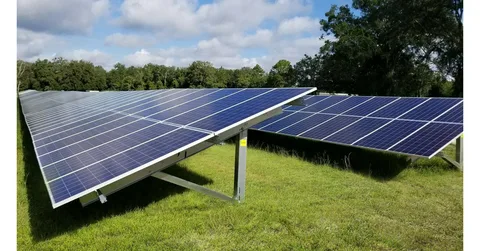How Fixed Tilt Systems Are Driving Solar Expansion in the US

Introduction
The US Fixed Tilt Solar PV Market has emerged as a stable and cost-effective segment within the broader solar energy industry. Fixed tilt photovoltaic (PV) systems are designed to hold solar panels at a fixed angle, optimizing sunlight exposure based on location and seasonal patterns. These systems offer simplicity, low maintenance, and cost advantages, making them a preferred choice for utility-scale and commercial installations. As the US continues to expand its renewable energy portfolio, fixed tilt PV systems play a critical role in supporting reliable and affordable solar deployment.
Market Drivers
The primary drivers of the US Fixed Tilt Solar PV Market include decreasing solar module prices, federal and state incentives, and the growing emphasis on decarbonization. The simplicity and durability of fixed tilt systems make them highly attractive for developers seeking long-term reliability with minimal operational complexity. The federal Investment Tax Credit (ITC) and state-level renewable portfolio standards continue to encourage large-scale solar investments, boosting installations across multiple states.
Market Challenges
While fixed tilt systems are cost-efficient, they face limitations in energy yield compared to tracking systems that follow the sun’s movement. This reduced efficiency can lead to lower energy output, especially in regions with high solar variability. Land requirements can also be higher, and return on investment may be slightly lower in regions where tracking technology provides a better yield-to-cost ratio.
Market Opportunities
Opportunities in the US Fixed Tilt Solar PV Market are driven by innovation in module design, better mounting technologies, and hybrid installations combining fixed tilt with bifacial modules to increase energy production. Additionally, repowering older solar farms and expanding rural and community solar projects create new growth prospects. Developers focusing on rapid installation and long-term durability are also finding fixed tilt systems ideal for minimizing operational risks and upfront costs.
Regional Insights
The Southwest and Southeast regions of the United States—especially states like Texas, Arizona, Nevada, and Florida—lead in fixed tilt solar installations due to their abundant sunlight and vast open land. Meanwhile, Midwest and Northeastern states are adopting these systems for community and agricultural solar programs where cost and simplicity are key factors. California remains a stronghold due to its renewable energy mandates and large-scale project pipeline.
Future Outlook
The future of the US Fixed Tilt Solar PV Market looks promising as advancements in materials, structural designs, and bifacial technology continue to enhance performance. Fixed tilt systems are expected to remain a vital component of the utility-scale solar landscape, particularly where cost efficiency and low maintenance are priorities. The combination of falling hardware costs and favorable policies will further strengthen the market’s long-term outlook.
Conclusion
The US Fixed Tilt Solar PV Market continues to serve as the backbone of affordable and scalable solar deployment. Its simplicity, reliability, and low lifecycle costs ensure its relevance amid advancing tracking technologies. As the nation pushes toward renewable energy independence, fixed tilt systems will remain integral to expanding solar generation capacity.
